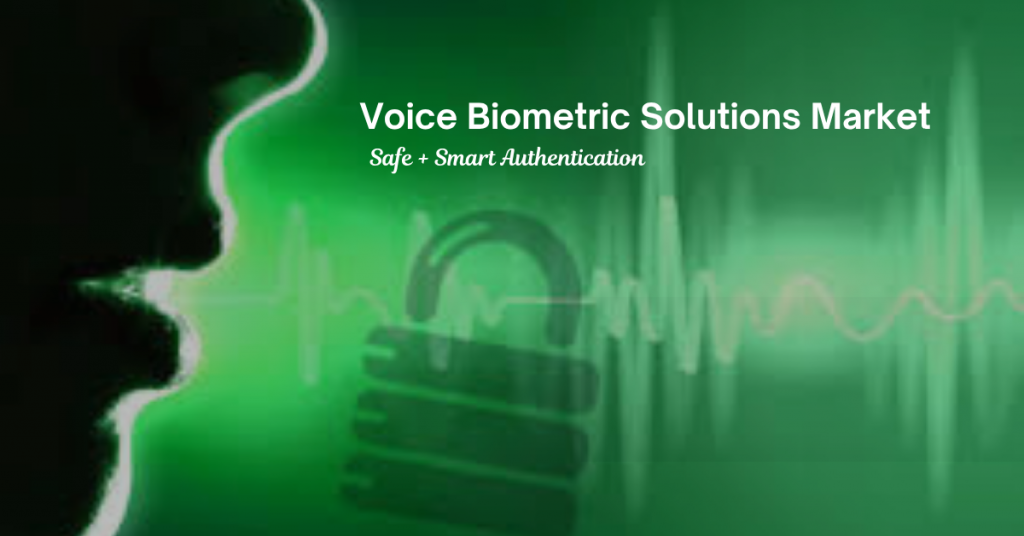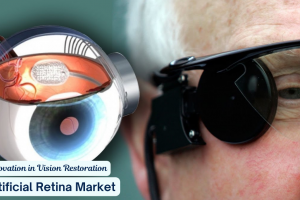
Market Overview
The global voice biometric solutions market has witnessed significant growth, expanding from USD 1,113.10 million in 2018 to USD 2,149.64 million in 2024. Projections indicate this market will soar to approximately USD 5,909.33 million by 2032, exhibiting a robust CAGR of 12.56%. This surge is primarily fueled by the increasing need for reliable, secure, and convenient authentication mechanisms in today’s digital world.
Voice biometric technology uses unique vocal features, such as pitch, tone, and speech rhythm, to verify identities. Unlike traditional authentication systems, voice biometrics offer a hands-free, frictionless user experience while providing strong security measures. With rising cybersecurity threats and identity fraud cases, organizations across sectors are adopting voice biometric solutions as an additional security layer.
Adoption is widespread across BFSI, healthcare, government, telecom, and retail sectors, each leveraging voice biometrics to streamline customer onboarding, enhance fraud detection, and improve operational efficiency. The ongoing digital transformation, combined with increased smartphone penetration and adoption of AI-driven solutions, further accelerates market growth.
Additionally, compliance requirements such as PSD2 in Europe and stringent KYC norms worldwide emphasize stronger multi-factor authentication systems, pushing voice biometrics into the mainstream. Cloud-based deployments and mobile-first applications make voice biometrics accessible to enterprises of all sizes.
Overall, voice biometric solutions are revolutionizing identity verification by blending security with user convenience, positioning themselves as indispensable tools in the evolving digital economy.
Read full report: https://www.credenceresearch.com/report/voice-biometric-solutions-market
Market Drivers
Shift Towards Passwordless Authentication
With growing security breaches linked to passwords, enterprises and consumers are increasingly seeking passwordless authentication methods. Voice biometrics provide a secure alternative by recognizing unique voice patterns, reducing risks associated with password theft or reuse. This trend is supported by industry standards advocating biometric authentication.
Enhanced Customer Experience in Contact Centers
Voice biometrics drastically reduce call verification times and improve customer satisfaction. Automated voice recognition eliminates the need for security questions, accelerating service delivery and minimizing call drop-offs. This driver is vital for sectors with heavy call volumes, such as banking and telecom.
Increasing Adoption of AI-Powered Security Systems
Advancements in artificial intelligence enable voice biometric systems to offer higher accuracy and faster response times. AI algorithms adapt to voice variations caused by illness, aging, or emotional states, reducing false rejections and enhancing reliability. These improvements encourage broader market acceptance.
Expansion of Smart Devices and IoT Ecosystems
The proliferation of smart speakers, home automation systems, and wearable devices demands intuitive yet secure user verification methods. Voice biometrics fit this requirement perfectly by allowing seamless voice-based access control without compromising security.
Market Challenges
Environmental and Health Factors Affecting Voice Accuracy
Variations in voice caused by illness, stress, or aging can impact the reliability of voice biometric systems. These fluctuations sometimes lead to false rejections, affecting user experience and trust.
Security Concerns Regarding Voice Spoofing
Despite advancements, voice biometric systems remain susceptible to spoofing attacks using recorded or synthetic voices. Developing robust anti-spoofing mechanisms remains a technical challenge for the industry.
Data Privacy and Legal Compliance Issues
The collection and storage of voiceprints raise significant privacy and ethical considerations. Compliance with data protection regulations requires transparent user consent and secure handling of biometric data, posing operational challenges for providers.
Integration Complexity and Costs
Deploying voice biometric solutions within existing IT infrastructures, especially in legacy systems, can be complex and costly. Small and medium enterprises may find initial investments and integration efforts prohibitive.
Market Opportunity
Growth in Mobile Banking and Financial Services
The rise of mobile banking applications globally presents a massive opportunity for voice biometrics to offer secure, quick user authentication. Financial institutions are increasingly deploying voice biometrics to combat fraud and comply with regulatory mandates.
Use in Government and Public Safety Applications
Governments are exploring voice biometric solutions for secure citizen identification, border control, and law enforcement. These applications provide secure, non-invasive ways to authenticate identities at scale.
Expansion in Healthcare for Patient Verification
The healthcare sector requires secure access to patient records and remote consultation services. Voice biometrics can help verify patient identities, protect sensitive health data, and improve telehealth service delivery.
Emerging Markets and Multilingual Capabilities
With rising internet penetration and smartphone adoption in emerging economies, voice biometrics can address identity verification challenges in remote and multilingual populations. AI-driven language and accent recognition enhance adoption potential in these regions.
Market Segmentation
Based on Component:
- Software
- Hardware
- Services
Based on Application:
- Fraud Detection & Prevention
- Customer Identification & Verification
- Access Control & Security
- Forensic & Law Enforcement
- Transaction Authentication
- Workforce Management
- Others
Based on Deployment:
- Cloud-based
- On-premises
Based on End User:
- BFSI
- Healthcare
- Telecom
- Government
- Retail
- Others
Based on Geography:
- North America
- Europe
- Asia Pacific
- Latin America
- Middle East & Africa
Regional Analysis
North America
North America remains the dominant market for voice biometric solutions, supported by widespread technology adoption, strong cybersecurity regulations, and the presence of key vendors. The U.S. leads with active investments in AI and biometric security solutions, driven by demand from BFSI and government sectors.
Europe
Europe has steadily adopted voice biometrics, propelled by stringent data privacy laws such as GDPR. Countries including the UK, Germany, and France lead the region, with BFSI and telecom driving demand for advanced authentication technologies. Increased government initiatives toward digital identity also foster growth.
Asia Pacific
Asia Pacific is forecasted to witness the fastest growth due to rapid digital adoption, rising smartphone users, and government projects focused on citizen identity verification. China, India, and Japan are key markets, fueled by expanding e-commerce and mobile banking services.
Latin America
Latin America’s adoption of voice biometrics is gaining momentum, particularly in Brazil and Mexico, where mobile penetration and digital financial services are expanding rapidly. However, infrastructural and regulatory challenges limit faster adoption in rural areas.
Middle East & Africa
The Middle East & Africa are gradually embracing voice biometrics, with increasing deployment in banking, telecommunications, and government applications. Gulf countries lead the region by modernizing their digital ecosystems and investing in secure authentication.
Top Companies
- Nuance Communications
- Verint Systems
- NICE Systems
- Auraya Systems
- Pindrop Security
- Sensory, Inc.
- VoiceTrust, Inc.
- SpeechPro
- Agnitio
Future Outlook
- Increasing integration of voice biometrics with multi-modal authentication systems combining face, fingerprint, and behavioral biometrics.
- Expansion of voice biometric use in mobile payment authentication and digital wallets.
- Continued R&D to improve anti-spoofing capabilities and mitigate fraud risks.
- Growth in cloud-based voice biometric platforms allowing scalable deployment across SMEs and enterprises.
- Wider adoption in government services for e-governance, social welfare programs, and digital identities.
- Enhanced personalization of voice biometrics using AI to adapt to individual voice changes.
- Use in emerging technologies like virtual reality (VR) and augmented reality (AR) for secure user access.
- Rise of decentralized biometric data storage models enhancing user privacy and control.
- Increasing partnerships between telecom operators and biometric solution providers to enhance network security.
- Expansion in developing countries, supported by affordable mobile technology and government digitization initiatives.
Read full report: https://www.credenceresearch.com/report/voice-biometric-solutions-market









